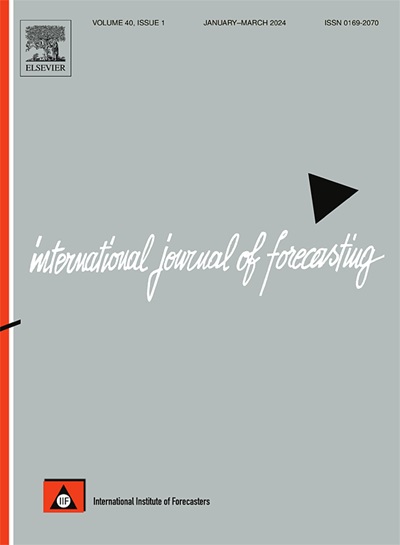The contribution of realized variance–covariance models to the economic value of volatility timing
IF 7.1
2区 经济学
Q1 ECONOMICS
引用次数: 0
Abstract
Realized variance–covariance models define the conditional expectation of a realized variance–covariance matrix as a function of past matrices using a GARCH-type structure. We evaluate the forecasting performance of various models in terms of economic value, measured through economic loss functions, across two datasets. Our empirical findings reveal that models incorporating realized volatilities offer significant economic value and outperform GARCH models relying solely on daily returns for daily and weekly horizons. Among two realized variance–covariance measures, using a directly rescaled intraday measure for full-day estimation provides more economic value than employing overnight returns, which tends to produce noisier estimators of overnight covariance, diminishing their predictive effectiveness. The HEAVY-H model for the variance–covariance matrix of the daily return demonstrates superior or comparable performance to the best-performing realized variance–covariance models, making it a preferred choice for empirical analysis.
已实现的方差-协方差模型对波动率时序经济价值的贡献
已实现方差-协方差模型使用garch型结构将已实现方差-协方差矩阵的条件期望定义为过去矩阵的函数。我们通过两个数据集的经济损失函数来评估各种模型在经济价值方面的预测性能。我们的实证研究结果表明,纳入已实现波动率的模型具有显著的经济价值,并且优于仅依赖每日和每周每日回报的GARCH模型。在两个已实现的方差-协方差度量中,使用直接重标的日内度量进行全天估计比使用隔夜收益提供了更多的经济价值,这往往会产生隔夜协方差的噪声估计,从而降低了它们的预测有效性。日收益方差-协方差矩阵的HEAVY-H模型表现优于或可与已实现的最佳方差-协方差模型相媲美,是实证分析的首选。
本文章由计算机程序翻译,如有差异,请以英文原文为准。
求助全文
约1分钟内获得全文
求助全文
来源期刊

International Journal of Forecasting
Multiple-
CiteScore
17.10
自引率
11.40%
发文量
189
审稿时长
77 days
期刊介绍:
The International Journal of Forecasting is a leading journal in its field that publishes high quality refereed papers. It aims to bridge the gap between theory and practice, making forecasting useful and relevant for decision and policy makers. The journal places strong emphasis on empirical studies, evaluation activities, implementation research, and improving the practice of forecasting. It welcomes various points of view and encourages debate to find solutions to field-related problems. The journal is the official publication of the International Institute of Forecasters (IIF) and is indexed in Sociological Abstracts, Journal of Economic Literature, Statistical Theory and Method Abstracts, INSPEC, Current Contents, UMI Data Courier, RePEc, Academic Journal Guide, CIS, IAOR, and Social Sciences Citation Index.
 求助内容:
求助内容: 应助结果提醒方式:
应助结果提醒方式:


